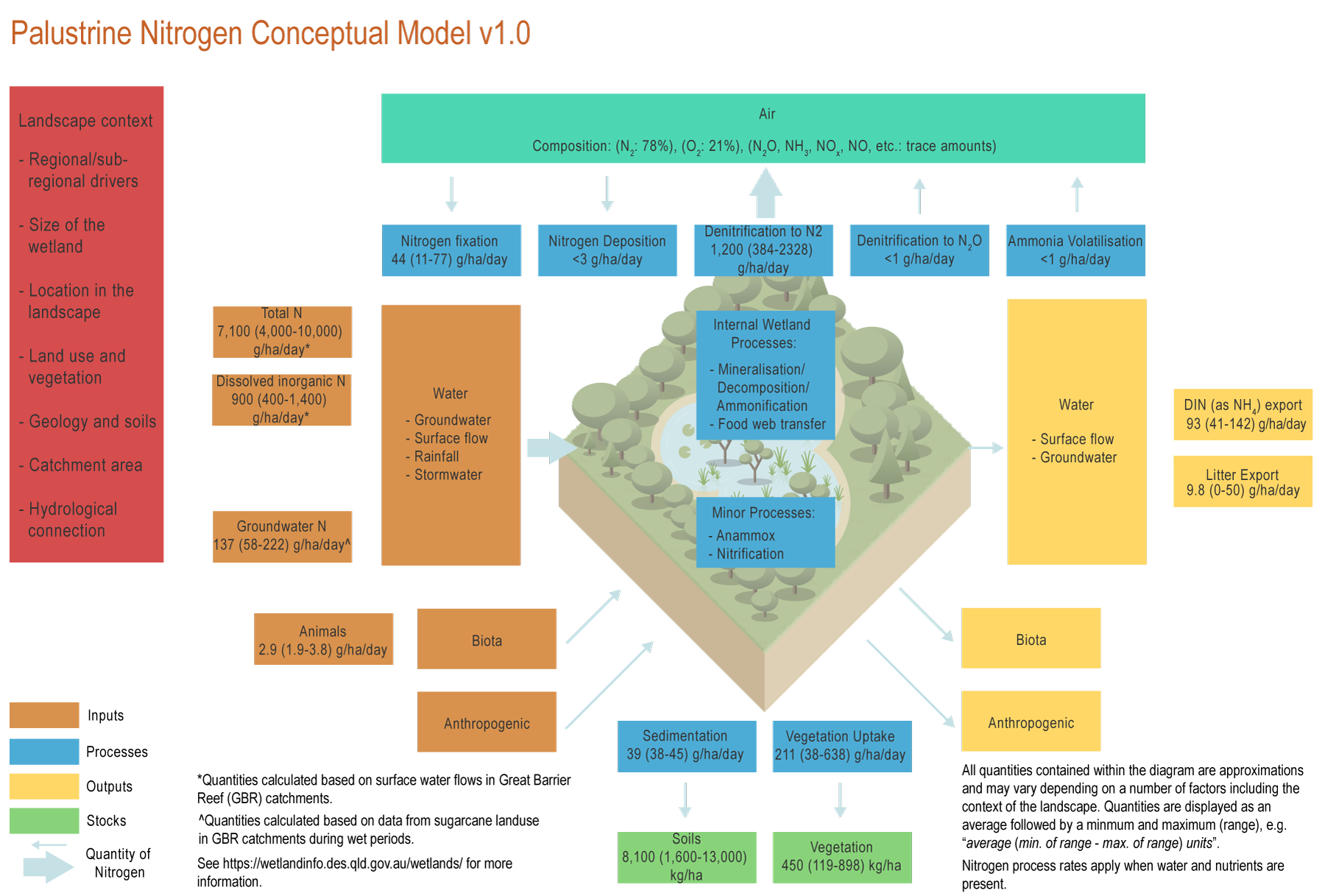|
|
PalustrinePalustrine – Effects
The conceptual models were compiled by researchers in collaboration with a wide range of stakeholders from Natural Resource Management groups, universities and government agencies and based on available scientific information[4]. Click on elements of the model or select from the tabs below The effects of nitrogen (N) on a wetland can vary depending on the inputs, processes, stocks and outputs of the wetland. GeneralGeneral nitrogen effects content can be found on the Pressures page. Palustrine specificExcessive nitrogen in palustrine wetlands can cause effects on wetlands through eutrophication of water encouraging weed and algae growth. Excessive algal growth can affect the whole wetland community by reducing light, reducing oxygen, and causing toxicity of the water if cyanobacteria blooms develop[6][1][7]. The degradation of the water quality during the dry season is more pronounced in shallow wetlands where cattle or feral animals frequently visit, compared to deeper ponds or those without cattle[2]. The condition or state of the wetlands can affect how the system processes N. High infestations of weeds, significant amounts of sediment, feral animals, anaerobic conditions (low oxygen and nitrate) and changes to hydrology can have large impacts on the efficiencies of the system to process N[4]. Healthy palustrine wetlands primarily produce nitrogen gas (N2) from denitrification, but wetlands with high N loads and anaerobic conditions can generate N2O, a potent greenhouse gas, and NH3[5], which is toxic to aquatic fauna. Water entering freshwater wetlands within the Great Barrier Reef catchment is affected by high nutrient inputs. Nutrients such as nitrogen and phosphorus occur naturally in freshwater wetlands, however, annual discharge of nutrients has more than doubled since European settlement. The nitrite and nitrate loads in rivers increase as water travels downstream. Increased nutrient loads to wetlands can lead to sudden, and sometimes irreversible, changes such as increases in productivity, shifts in species dominance and composition, changes in carbon and nutrient cycling. Excess nutrients can lead to excessive algal and plant growth, which can affect invertebrate fauna by reducing light and suitable substrate. Nutrients coupled with high temperatures can cause declines in macroinvertebrates and fish and the overgrowth of weeds. The effects of nutrients on freshwater wetlands in the Great Barrier Reef catchment are largely driven by rainfall. During wet seasons, large amounts of nutrients, sediments and pesticides can be rapidly mobilised and transported downstream. During the dry season, poor water quality can be exacerbated by low flushing and high organic matter inputs from dying organisms. Future changes in the frequency, timing and intensity of rainfall in the region will have consequences on the impact of nutrients in freshwater wetlands[3]. References
Last updated: 2 August 2021 This page should be cited as: Department of Environment, Science and Innovation, Queensland (2021) Palustrine – Effects, WetlandInfo website, accessed 8 May 2025. Available at: https://wetlandinfo.des.qld.gov.au/wetlands/ecology/processes-systems/nitrogen-concept-model/palustrine/effects.html |

 — Department of the Environment, Tourism, Science and Innovation
— Department of the Environment, Tourism, Science and Innovation

